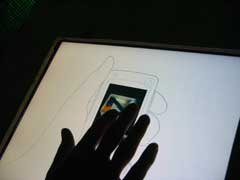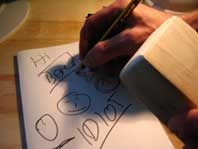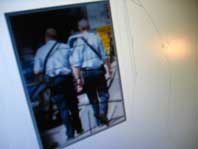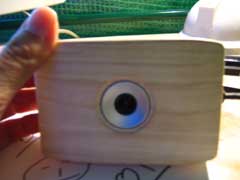Tiger: Snippet
One of the things that comes with Tiger that I wasn‘t hugely fussed about until I began to see the potential of it was Automator. I got the chance to view an introductory video about Tiger which showed building an Automator workflow. It really is superb, and over the next few months we’ll see more and more Automator workflows and plugins coming out that make working on your Mac easier or more productive or whatever. It has huge potential! Here are a few links to articles, actions, sites and the like dealing with Automator.
Apple - Mac OS X Downloads - Automator Actions
Automator World: “Automator World is dedicated the Mac OS X 10.4 (Tiger) scripting application Automator. Automator World is a clearinghouse of user-contributed Workflows and Actions, as well as Automator information, news and tips.”
Folksonomise your files with Automator: “One of the big buzzwords in personal (and digital) organization these days is ‘folksonomy’; the process of adding keywords, or tags, to data in an effort to arrange it into loose ‘clouds’ of connectivity. The influence of web services like del.icio.us and Flickr has spread far. If you want to use the same approach to your files and documents in Tiger, Automator offers the perfect solution.”
brilliantdays.com: Automator gems: “First there‘s the ’Add spotlight tags‘ from Adam Rice. There’s no download, you make it yourself in Automator. Save it as a plugin in Finder, for right-click tagging. Next time you download a file, choose it in Finder, ctrl-click it and choose Automator>Add spotlight tags. Let‘s say you’re working with a project, and the file downloaded is a picture that belongs to that project. So add some tags belonging to that project with this Automator action. Next time you use Spotlight to search for that projects tags, the file will show up, wherever you have put it on your drives.”
brilliantdays.com: Getting things done with Automator and Spotlight: "By using Spotlight and Automator, and the new Smart folders in OS X 10.4, you can change all those messy files on the desktop to something useful.
MacDevCenter.com: Write Your Own Automator Actions: “Mac OS X 10.4 (Tiger) introduces Automator, which lets users string together preinstalled script steps (Actions) into a sequence (Workflow) that can be run and saved. The sequence is a rudimentary data flow, or pipe: typically, each step outputs some data, which becomes the input to the next step. ”
MacDevCenter.com: Write Your Own Automator Actions: "Besides the more than 200 Actions installed by default in /System/Library/Automator, we may expect to see many third-party Actions in the near future, which the user will install in /Library/Automator or ~/Library/Automator. You, the developer, can participate in this movement by writing and distributing your own Actions."
Fraser Speirs - Flickr Automator Action 0.1: "o I quietly released my first Automator action, for uploading to Flickr. You can download it here."






 ThinkGeek is selling the ‘Ring Thing,’ a simple piece stainless steel jewelry that lets you perform beer-opening magic tricks at the drop of a backwards ballcap. Since my cheapo keychain bottle-cap opener died (Thanks, Dogfish Head!), I‘m going to give this a go—as soon as I can find a ruler that measures in increments of ’sausages.'
ThinkGeek is selling the ‘Ring Thing,’ a simple piece stainless steel jewelry that lets you perform beer-opening magic tricks at the drop of a backwards ballcap. Since my cheapo keychain bottle-cap opener died (Thanks, Dogfish Head!), I‘m going to give this a go—as soon as I can find a ruler that measures in increments of ’sausages.'